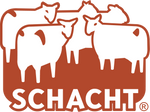By Cindy Lair
Have you ever thought about what it takes to manufacture a loom or spinning wheel? Here is an inside look at the manufacturing process over a series of posts. Everything starts with our suppliers. Building these relationships over the years has benefited Schacht, especially during the years when most woodworking was heading offshore or even more recently during Covid.

I always joke about my “wood dealer” whom we have known for over 26 years. His family owns a small mill in western Michigan. This small mill has very sophisticated industrial equipment for sawing, drying, and sorting lumber, mostly hard maple. Occasionally, we also purchase cherry and walnut from them.
A quick side note about the wood. Hard maple is the wood whose leaf is featured on the Canadian flag. It primarily grows in the East and North in colder regions of North America. It also gives us maple syrup and maple bourbon. These trees are purchased by mills from farms looking to thin timber, as opposed to being farmed. Hard wood trees are graded by their defects and color. We buy what is known as Select and Better White Hard Maple, the grades continue down in quality to #1 Common and #2 Common etc. We purchase wood in board feet by the semi-truck load. An interesting fact is that the wood loses 7% of its volume in water weight on the trip from Michigan to Colorado due to our drier climate.
We purchase bunks of lumber in board footage with a designation of “S2S”. This stands for surfaced two sides, the two surfaced sides are the top and bottom which are surfaced to a nominal thickness. These thicknesses are known or designated in quarters, as in one inch is four quarters. However, a one-inch piece will only make a three-quarter inch finished piece because in working the wood you lose a one quarter inch. In a loom these pieces are the treadles, castle sides and legs on wolf looms etc., beyond that looms also use five quarter, (one inch finished) six quarter, (one and one quarter inch finished), eight quarter, (two inch finished), ten quarter, (two and one quarter inch finished) and twelve quarter (two-one half inch finished). As looms go up in size so do the nominal thicknesses of wood allowing for greater strength to accommodate the warp without bending.

Once this wood is on site in Colorado, we store it in a large barn to acclimate for approximately three weeks. We then bring bunks of wood into the factory where the first step is to rip it. The process of ripping is horizontally removing the live edge into a straight edge, then further ripping each piece to a specified size, sounds simple right? To be cost effective, a ripper must know the parts of the loom intimately, the length, the surface finish desired, and the combination of sizes a certain length of board will produce.
To help accomplish this goal, we process the parts according to size, say one inch finished pieces, no matter what loom or product they go to these are done at the same time. This gives us the ability to rotate through all the sizes used at different times. Recently, we have switched to a one-person system of ripping which facilitates efficiency, by allowing one person to do what previously was a two-person task.
Stay tuned as we will take you through the entire manufacturing process.
About the Author: Cindy Lair has worked at Schacht for almost 36 years, being intimately familiar with the production process at Schacht. She loves the big noisy machines that allow Schacht to produce products. Cindy believes in the importance of creativity in our customers’ lives.

